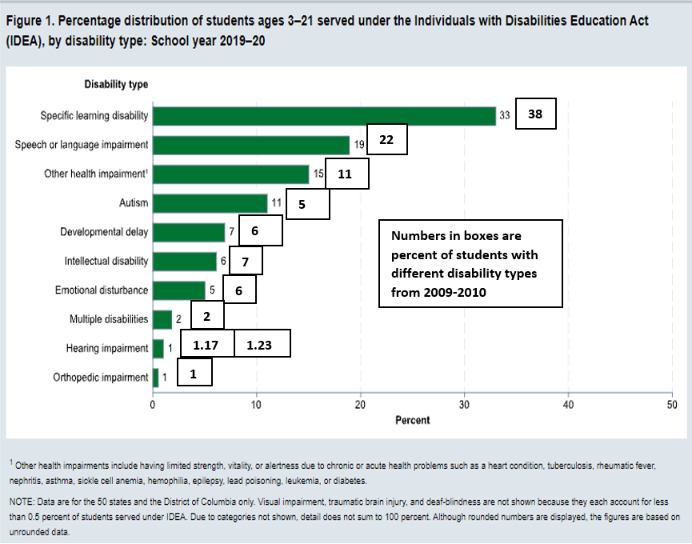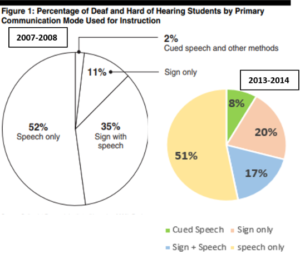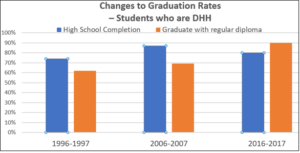Related Products
For Parents
Related Teacher Tools Takeout Items
10 Years of Changes!
The only thing guaranteed in life is CHANGE! Supporting Success for Children with Hearing Loss is celebrating 10 years this month. This article takes this opportunity to consider the many changes impacting education of students who are deaf or hard of hearing during this period.
Can you guess them all?
Supporting Success for Children with Hearing Loss came on the scene in November 2011, a time when many center-based teachers of the deaf/hard of hearing (DHH) had moved into itinerant teaching roles. Our first book, Building Skills for Success in the Fast-Paced Classroom, quickly became a well-used resource. It’s even been called the ‘deaf bible’ although it focuses on supporting students in the mainstream with any degree of hearing loss. Supporting Success has since grown to 10 sole source books or games, 7 additional SSCHL publications, 75 related products, plus Streamer captioning, myASLTech.com memberships, Teacher Tools Takeout marketplace (with subscriptions) and Supporting Success Courses. Every resource provided by Supporting Success was selected to support educators and families of our children who are deaf or hard of hearing.
Changes to Placements – where DHH students are educated
Perhaps the biggest change is the continuing trend to educate as many children as possible in the mainstream classroom. Center-based classes for DHH students continue to be eliminated as parents and school administrators demand that all children, despite their level of special needs, be educated in the inclusive classroom setting.
| Changes to Placement – Students who are DHH |
1996-1997 | 2006-2007 | 2016-2017 |
| Time inside regular class <40% | 25% | 20% | 10% |
| Time inside regular class 40-79% | 19% | 10% | 15% |
| Time inside regular class 80%+ | 39% | 49% | 63% |
| Other environments (i.e., school for Deaf) | 17% | 14% | 12% |
While this is highly successful for many of our students who were early-identified and had effective early intervention services, the decrease in specialized service intensity and the reduced opportunity to be in school with other students who sign or use hearing devices has taken the academic and social/self-concept toll on many other students who are DHH. Despite IDEA Sec. 300.115 requiring school districts to offer a continuum of alternative placements, all too often the choice for students with hearing loss is no DHH service or limited itinerant DHH teacher services.
DHH is even more low incidence
In 2019–20, the number of students ages 3–21 who received special education services under the Individuals with Disabilities Education Act (IDEA) was 7.3 million, or 14 percent of all public-school students. Ten years ago (2009-2010) students in special education comprised 13% of the school population. As can be seen from the chart below there has been a 4 percent increase in the percent of students with other health impairment, a 6% increase for those with autism, and a 1% increase for those with developmental delay. All other categories, including hearing loss, decreased in percentage even though the overall percent of students with disabilities increased. The DHH ‘fish’ continues to get smaller within the special education ‘pond’. Some of this is the success of early identification of hearing loss and early intervention. This may also reflect a trend for not qualifying students with special needs (such as expanded core skills) that would have been qualified in the past.

 Communication Modality Shifts
Communication Modality Shifts
In 2007-2008 a total of 46% of students in the annual Gallaudet survey used sign language.
In the survey reflecting 2013-2014 (apparently the last survey) 20.5% had a cochlear implant(s), 58% used hearing aid(s), 20% used a signed language only and 17% used sign with speech, 8% used cued transliteration and 51% were spoken language only.
Thus, in 5 years, the percent of students using sign language alone or sim-com decreased from 46% to 37%, whereas those using speech or cues with speech increased from 54% to 59%. It is likely that the trend toward a higher percentage of spoken language and fewer sim-com students has continued in the most recent 5 years.
 Higher graduation rates
Higher graduation rates
Whether it is another impact of early hearing loss identification or changes to criteria for graduation or other factors, students who are deaf or hard of hearing are graduating at a higher rate than ever before.
Shift toward using digital teaching materials
Remember getting to school early so you could copy off the teaching materials you needed? While we still do some of that, more and more often we are turning to materials we can use on our computers or notebooks to record data or present work to students. This was made even more true when the COVID pandemic caused so much of education to switch from face-to-face to virtual. There has been a steady decline in purchase of printed curriculums and a rise in purchase of digital worksheets and checklists – which is why we invested in creating the Teacher Tools Takeout marketplace! As of this month, we have over 7000 account users in Takeout; a number that has been growing 500 or more every month!
Fewer trained teachers of the deaf/hard of hearing
Teacher training programs have closed, fewer students are seeking training in any education program, and acceptable credential criteria has loosened as a result of the teacher shortage. The shortage is even more evident in special education fields like DHH teaching. The result? The teachers who are currently working have often seen an increase in their caseloads and less ability to truly be able to meet the service intensity needs of students with larger language/achievement gaps.
The recent ‘COVID year’ pushed even more teachers into retirement. Also, the majority of DHH teachers seem to have more than 20-25 years of experience, meaning that we will see much of our DHH teacher workforce retiring within the next few years. Many districts are hiring teachers who have just been accepted into a DHH teacher training program, hoping to provide on the job training and mentoring as they try to meet their caseload IEP needs. Other districts have gone the certificate or ‘pass the test’ route meaning someone with little or no training in DHH can become credentialed to be the district expert in DHH education. It can take years to really understand ‘what it means to have a hearing loss’ and the far-reaching impacts and even more time to feel comfortable with how to assess to identify needs and provide appropriate services that really make a difference. Of all the changes in the last 10 years, this may be the most concerning. A positive note is the rise of specialized virtual education services that districts can contract for if they can’t hire a qualified teacher of the deaf/hard of hearing. While it is not the same as face-to-face itinerant services, involving a facilitator during the teaching times can work to increase follow through in the regular education setting.
Be the CHANGE you wish to see in the world! Mahatma Gandhi
The measure of intelligence is the ability to change Albert Einstein
- https://nces.ed.gov/fastfacts/display.asp?id=64
- https://nces.ed.gov/programs/coe/indicator/cgg
- https://nces.ed.gov/programs/coe/indicator/cgg
- https://nces.ed.gov/fastfacts/display.asp?id=64
- https://www.gao.gov/assets/gao-11-357.pdf
- https://www.gallaudet.edu/documents/Research-Support-and-International-Affairs/Intl%20Affairs/Demographics/AS14_RegNat.pdf
- https://nces.ed.gov/programs/digest/d19/tables/dt19_204.60.asp
Author: Author: Karen L. Anderson, PhD
Click here to download this article
